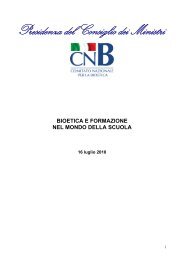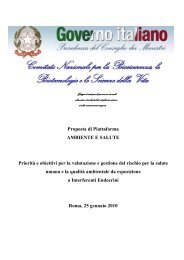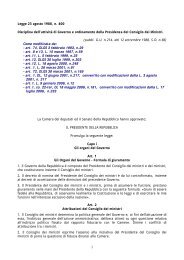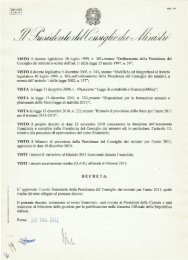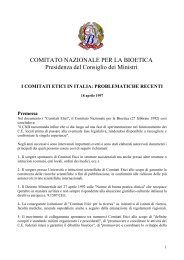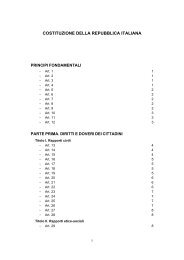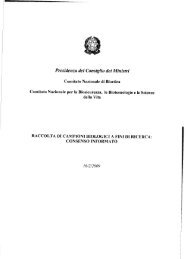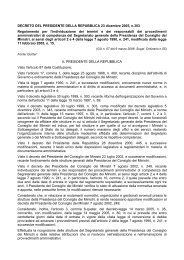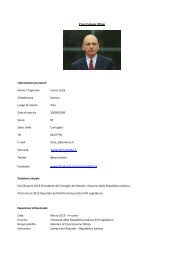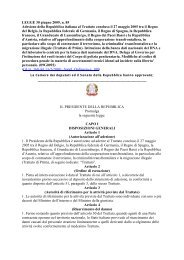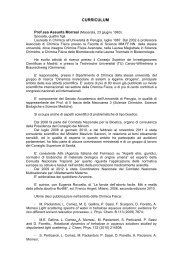President
President
President
Create successful ePaper yourself
Turn your PDF publications into a flip-book with our unique Google optimized e-Paper software.
or in another context, your health data (e.g.: infectious diseases), therefore<br />
improving the degree of confidentiality of those involved.<br />
However, a risk not to be ignored is, that in other respects, biometric data<br />
reveals information in excess and is used for purposes that go beyond the<br />
intended purpose of authentication, resulting in a specific phenomenon which in<br />
jargon is defined function-creep, or "the exploitation of data" 390 or undue<br />
expansion of the use of data. For example, DNA, in addition to genetic identity,<br />
captures information on the susceptibility to diseases in general and on<br />
individual phenotype, the method of recognition of the retina the part of the eye<br />
which is characterized by high vascularity may indicate the presence of<br />
hypertension or diabetes, iris analysis can show the use of alcohol or drugs,<br />
temperature or some characteristics of particular areas of the face can detect<br />
psycho-physical or even pathological condition. It is possible that these data<br />
are captured and then released, unknown to or even against the will of the<br />
subject. This can lead to a distorted movement of the information that, in<br />
extreme cases, could produce potentially uncontrolled disturbing scenarios.<br />
A further source of concern arises from possible aggregation of data.<br />
Through the overlapping of biometric data with other information (such as<br />
medical, financial or behavioral information) it is possible to imagine their<br />
centralized and combined use for so-called profiling. Profiling can be defined as<br />
the act or process by which an individual becomes the object of special<br />
attention by observing specific characteristics or behaviours according to which,<br />
by extrapolating the information concerning him (knowledge discovery in<br />
databases, data mining), several profiles of attention or suspicion are created.<br />
Profiling is one of the most used techniques, for example, to combat<br />
terrorism and implies, without judicial review, the placement of certain subjects,<br />
based on data collected without their knowledge in specific risk categories,<br />
precluding an opportunity to access some countries or to enjoy certain<br />
services. These cases of preventive and informal profiling have always been a<br />
useful part of the operational police practice 391 . But now technology increases<br />
the possibility of biomonitoring to the point of being able to constitute, if applied<br />
in a widespread and indiscriminate manner, an inversion in the burden of proof<br />
by which the presumption of innocence, the foundation of the protection of<br />
individual freedom and the rule of law, could become a form of presumption of<br />
guilt. In extreme cases, a person may be forced, without having committed any<br />
specific crime, to justify his overall behaviour to show that he is not a danger.<br />
But it is also possible to hypothesise possible discrimination in access to jobs<br />
and in many other spheres of economic and social life.<br />
Therefore the dangers of profiling should be properly emphasized,<br />
prohibiting the crossing of data susceptible to stigmatization or exclusion and<br />
allowing use only in relevant cases, legally predetermined, with adequate<br />
390 EC - Working Group for the Protection of Persons concerning the Processing of Personal<br />
Data, Opinion 3/2005 on the implementation of EC Regulation 2252/2004 of the Council<br />
(December 13, 2004), on standards for security features and biometrics in passports and travel<br />
documents issued by Member States - WP112 (Official Journal L 385, 29.12.2004, pp. 1-6),<br />
adopted September 30, 2005.<br />
391 Strictly speaking, the origins of the investigative technique of profiling are traced back to the<br />
Fifties, when the New York police made use of psychiatry to put together heterogeneous clues<br />
designed to rebuild the possible profile of the person responsible for a series of attacks. But<br />
already in 1879 Alphonse Bertillon, a famous French police inspector, had proposed a system<br />
of anatomical measurements (including the length of arms and feet) to identify and record<br />
repeat offenders.<br />
314




